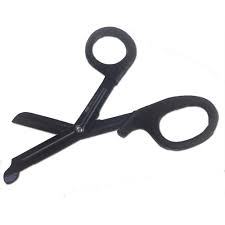Medical Kits Part 1: The Componential Kit and the CPOD
The approach I advocate for quickly adapting your medical kit for different outings is to have a componential kit with various “pods” that serve different purposes. Today we will discuss the “core” pod or “CPOD”—the lightest, simplest most important pod for most situations that you will keep with you most everywhere and at most times. To this you add various additional pods that augment the CPOD to bring on outings as needed. That may be a few more items (for a 1-2 day Grade VI big wall) or 20, 40, 60 lbs of equipment on larger expeditions to a remote basecamp. You can always jettison some pods at basecamp, or at the base of a climb as needed. But the CPOD should go with you just about everywhere. This means in your hydration pack or small backpack on long climbs.
The CPod
A good place to start for the CPOD for a climber in the southeast would be with the following:
- A thin CPR shield OR a true rescue mask (heavier, bulkier). You need a CPR shield or true mask to breathe for people who are not breathing or who are not breathing enough. True, people who are not breathing at a crag from major trauma will likely not survive. However, there are many other etiologies of “respiratory arrest” that are fixable. These include asthma attacks, allergic reactions, lightning strikes, collapsed lungs. In these cases it may be necessary to help someone breathe or breathe for them until they can breathe on their own.
- Trauma shears. Mandatory. Get a small set. Better than a knife. Makes accurate cuts on fabric and materials far superior to knife cutting. Allows you to fabricate infinite items from others. For example, use shears to fashion a small piece of your water bottle’s plastic lanyard to repair a broken zipper pull. Fold duct tape or coban in half, cut a half circle and you have a custom fit blister doughnut. Cut hair. Cut webbing, Cut harnesses. Crucial in trauma assessments to allow the removal of clothing without moving the patient (with the caveat that you must always weigh the risk of destroying insulation layers in the wilderness). The uses are endless.

- Duct tape. A must have for everything. Gear repair. Wound closure. Splinting. Sucking chest wall wound occlusion, restraints, boot hotspot treatment, patient immobilizing, packaging, the list goes on and on. Find or make a compact roll on a small caliber cardboard roll for space savings. Or fold a 12″ piece of duct tape in half, and then wind onto this as much tape as you want. This will make a very compact mat of duct tape.
- Epinephrine. Epinephrine is absolutely essential for your medical kit. In the event of life threatening allergic reactions—from insect bites, food allergies or medications– it will save lives. In the hands of advanced providers it can also be used for very serious asthma and even when someone’s heart stops. Indispensable. Anyone with some training should be able to achieve a prescription for it by discussing their outdoor hobby with their doctor. Look for the upcoming blog on administering epinephrine.
You will need either:
- two of the commercially made “EPIPEN” auto-injector type devices or
- make your own kit (much cheaper)
- 2 count 1ml ampule vials of 1:1000 epinephrine
- 2 count 1 ml syringes with matching 1″ 25 gauge needles either built in t or separate
- Several alcohol prep pads (optional)
***An additional option would be a multi-dose vial of epinephrine (more on this in a future post).
- Plastic gloves. Vinyl, chloroprene or nitrile. 2 pair min. You have to have gloves to safely provide medical care.
- Aspirin. 2 count (minimum) 325 mg tabs. More if able. This is the medicine you give to people that you think are having a heart attack. If you are a guide, this is a must. This is the only medicine shown to improve survival in people having heart attacks. It changes platelets (the blood parts that form clots) so that they don’t aggregate and form clots in heart vessels.
- Motrin. 12 count 200 mg tabs. “Vitamin I”, the go to over the counter pain reliever and anti-inflammatory.
- Benadryl. 4 count 25 mg tabs. Vital for life threatening allergic reactions, it is also useful for mild/moderate reactions, nausea, sedation, sleeplessness, and as a local anesthetic.
- Coban. 3 inches wide, 10-15 feet (stretched). This should be taken off of the cardboard spindle and then rerolled and pressed flat for space savings. This stuff is elastic, strong and handy for wound repair and coverage, splinting, gentle compression. It is very light and compact.

- 2×2 and/or 4 x 4 gauze and/or tampons. 4-8 count of each. The gauze is for covering things you want to keep clean (lacerations, bones poking through skin, holes in the chest, damaged eyes, etc). Or you can roll it to plug a bleeding nose. Alternatively, you can start with a roll (tampon) to plug a nose or a vagina, OR you can unroll it to act like gauze.
